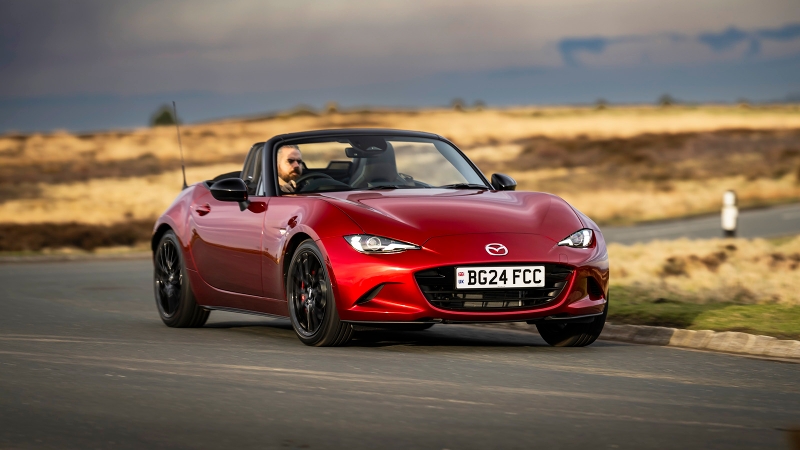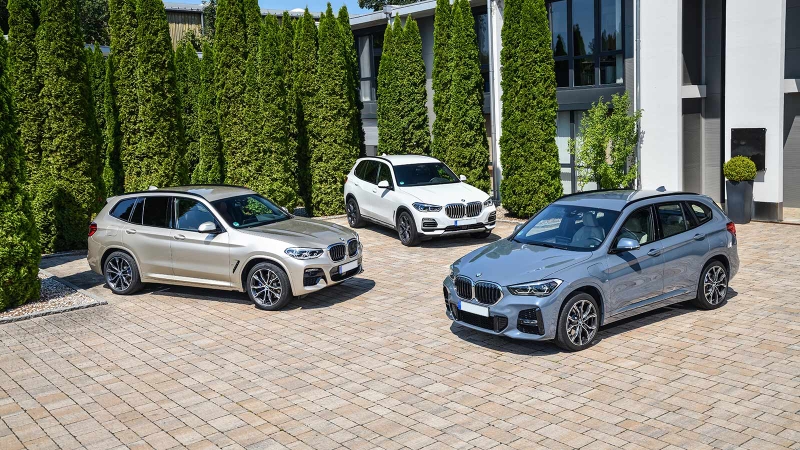






















BMW M2 Review

BMW has confirmed that the new M2 is the last petrol-only M car. So the M2 is a bit of a swansong for traditional big-engined petrol sports cars.
With such high expectations, it’s a relief to find out that the M2 is a stunning driver’s car that’s a top rival to a Porsche Cayman or Toyota Supra.
- Impressive performance
- Fantastic steering
- Residual values should be strong
- Thirsty
- Divisive styling
- Thick steering wheel
Should I buy a BMW M2?
It’s hard to predict which cars will become future classics. The BMW M2 stands a good chance, though, because BMW has confirmed that this ‘G87’ car is going to be the very last non-electrified performance car it makes. All forthcoming M cars will be plug-in hybrid or electric, so the M2 looks like it’ll appeal to petrol sports car fans long after it eventually gets retired.
But the M2 is for the here and now, to have fun on country lanes and to keep pace with junior supercars. It’s incessantly rapid, regardless of the type of road you’re on, and we wouldn’t wish for any more performance from a road car. The M2 now sits on the same platform as the larger M3 and M4, and uses the same 3.0-litre six-cylinder engine – albeit detuned slightly.

You’d be forgiven for thinking the M2 is a touring car, not a road car. Look at its steroidal wheel arches, its puffed out side skirts and its instantly noticeable raised bonnet. It’s never going to be mistaken for a standard BMW 2 Series.
The M2 also gets a brand-new front end, with piercing headlights and bold, square air vents. There’s a carbon-fibre roof up top and, around the back, four large ‘n loud exhausts. The previous M2 might have been prettier and daintier, but the new M2 will captivate you with its presence and race car stance. It looks better in the metal than in pictures, we promise.
To our eyes the styling is more of a success than the M4’s sometimes clunky design. And when the M2 is so similar to the M4 but even marginally better to drive, why would you spend the extra £20k or so to get the M4? The M2 might be the sweet spot in BMW’s growing performance car lineup.
Interior and technology

As well as the underpinnings, the interior’s carried over from the latest 3 Series and 4 Series, too. Perched on top of the dashboard is a curved screen panel, comprising a 12.3-inch digital instrument cluster and a 14.9-inch touchscreen.
The instrument cluster has had a thorough redesign, and it’s now much clearer and much easier to read key info at a glance. It’s very configurable and can still show a whole smorgasbord of data and settings if you want it to, which can be accessed and changed via the right-hand-side steering wheel buttons.
There’s still a physical iDrive controller, which means you don’t have to keep prodding through the touchscreen if you don’t want to. The rotary dial makes it easy to change the view of the screen while you’re driving, although the screen is very responsive to your touch inputs and quick to load. But with so many features to display, the touchscreen can feel busy and it can take a couple of looks away from the road to access the exact setting or submenu that you want.

Our test car came with the carbon fibre interior trim, which was standard until mid-2024 and then bundled into a nearly £10,000 option pack thereafter. The addition of the carbon trim makes the M2 feel much more special and racy than the standard 2 Series – the red start button and drive mode buttons also help.
Material quality is typically BMW-ish – the interior really feels like it’s built to last. Even after driving over some very bumpy roads, there weren’t any creaks or rattles in the cabin.
Standard equipment includes a reversing camera, heated leather sports seats, cruise control and split-size alloy wheels – 19 inches at the front and 20 inches at the rear.
Practicality

M2 buyers won’t have practicality at the top of their priority list, but switching to the same platform as the 3 Series and 4 Series has made the M2 a little bit more practical than the previous model.
Mind you, the 4 Series is physically bigger and will be a better choice if you’re regularly going to be carrying passengers. The M2 is a bit tight in the back seats for legroom and headroom – even an average-sized adult will find their head butting up against the roof.
The 390-litre boot is a good size – it’s 10 litres more than a Volkswagen Golf or BMW 1 Series – although the coupe bootlid limits the size of items that you can put in the boot.
Engines and performance

Under the M2’s long bonnet is a powerhouse of an engine. It’s the same 3.0-litre twin-turbo inline-six engine as the M3 and M4, and produces 460hp or 480hp depending on the age of the car. That’s about 50hp down on the M3 and M4, but plenty in a slightly smaller car. A full-beans 0-62mph sprint takes just four seconds, and the top speed is a limited 155mph.
Below the M2, there’s an M240i version of the 2 Series that also uses a 3.0-litre six-cylinder engine, albeit with a few subtle differences. The M240i nearly matches the M2 for performance – despite being about 100hp down on the M2, it comes with xDrive four-wheel drive and is only a couple of tenths of a second slower from 0-62mph.
The M240i is considerably less expensive than the M2, but misses out on the flagship’s swollen body kit and range-topping status. Keen drivers will also prefer the M2’s rear-wheel-drive layout, as it’s more engaging.
Driving and comfort

And engaging it is. The steering has feel and weight – both increasingly rare things in modern cars – and the directness and speed of its response gives you an almost telepathic connection to the front wheels.
We tested the M2 in dry conditions and found it to have endless grip. The sportier driving modes give a tiny bit of leeway but always keep you pointing the right way, while the racetrack mode turns off the driver aids. We’d certainly avoid doing this on a wet road.
The M2 also lets you configure the chassis and engine, among other things. Comfort or sport modes are available, and the M2 is best enjoyed with the chassis in comfort mode and everything else in sport mode.

The ride is still firm in comfort mode and you’re well aware of the state of the road surface beneath you, but the harshness is just softened enough. In sport mode the ride is harder and bouncier – almost feeling like a pogo stick. The comfort mode for the suspension also makes the M2 just about civilised enough for a long motorway journey – although the constant noise from the 285-section rear tyres can become jarring after a while.
On back roads, you feel the M2 moving around and flowing with the surface. It’s a similar feel to what the 1 Series 128ti offers, but on a much heightened scale, requiring your full concentration on a demanding road. Enthusiasts will revel in this, feeling a connection to the car and feeling a key part of the process. A thinner steering wheel would be even better, and the M2 is thirsty – our test car managed 23mpg in mixed driving; other complaints are few and far between.
No complaints about the performance, that’s for sure. While the M2 doesn’t have the whipcrack instant-ness of a powerful electric car, the gearbox and throttle response don’t leave you waiting and you’re quickly hurtling along at high speed. The mid-range performance is particularly impressive, with an eagerness that’s impossible not to enjoy.


















































































